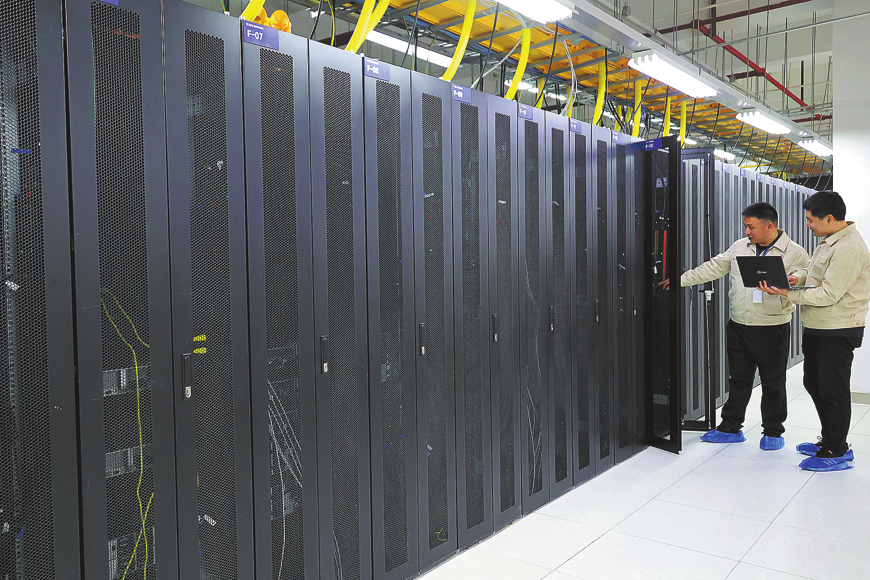Mind the gap to bridge the divide


Information officers must take on a digital mindset and move beyond cost to invest in new technologies
The Chinese economy has reached the stage where technology-digital savvy businesses are likely to be hailed as the new champions.
It comes as no surprise that chief information officer is one of the most sought-after roles in maturing Chinese enterprises, struggling to sharpen their technology teeth against competition in a fast changing and digitally driven environment. Though this may sound like great news for CIOs in China, they will need to understand the gaps in their current business and what digital strategies the real high performers and the leading CIO peers are driving across the globe.
The gap is not only about mindset, but actions, too.
The mission of most IT organizations in China is to serve the business by focusing on ways to cut costs, improve productivity and streamline processes. There are good reasons for this, as more efficient operations and processes can help reduce costs. However, more recently we have seen the rise of a new breed of CIO who understands that investing in digital technologies can deliver real competitive advantage by enhancing the customer experience, driving new growth opportunities, and improving overall performance.
Digital and physical businesses are blurring at increasing speed, and this will open up great opportunities. This development leads to another wake up call for CIOs: the importance of the business of apps. Software to enable company's new services through digital channels will become a core competence in the digital era.

Accenture's latest research, "High performers in IT", defined by digital, paints a compelling picture of these innovative IT leaders who are leaving their more conservative counterparts behind by investing in transformative new technologies such as cloud computing, analytics, social media, mobility and cyber security as active defense. It reports that these technologies can help create more agile businesses that are better equipped to analyze and understand evolving demands from customers, pass them on to the right person at the right time, and deliver new products and services that meet or anticipate customer needs.
The report revealed that high performers devote 55 percent of their information technology budgets to delivering strategic, new capabilities - increasingly through digital technologies - that support growth and business performance.
Because high performers have been early adopters of digital technology, they have a significant head start and are already reaping the benefits compared with those who are beginning to implement their digital strategies.
For example, the research shows that 69 percent of high performers are committed to mobile transactions as part of their customer service, compared with 41 percent of Chinese CIOs. This is significant because mobile transactions allow customers to do transactions around the clock: placing orders, booking travel, and even transferring cash between bank accounts while they are on the go. And nearly one-third of customer interactions for high performers are already self-service, with seamless interfaces across mobile, social media and web channels.
For example, a traditional food retailer and supermarket chain in Europe already receives 20 percent of its orders through digital channels.
Forward-looking organizations are also extending their social networks beyond people to intelligent objects, such as their products. For example, the engines on Boeing's new 787 Dreamliner aircraft are designed to transmit performance data in the form of news feeds to which maintenance teams can subscribe. Allowing the engine itself to automatically share its status enables service teams to more easily maintain it, reducing costs and increasing its lifespan.
Coupled with predictive-analytics technology, the performance data helps optimize aircraft maintenance and flight operations, anticipating the need for parts replacement, for instance. In addition, there is a major trend of rising to capitalize crowd sourcing in multiple areas of business: to innovate, to finance and kick-start new enterprises and to access scarce talent and skills beyond traditional company borders.
The report also finds that top performers are learning to master a hybrid IT environment. They have adopted a "cloud first" mentality, with one-third of IT leaders replacing their legacy architecture with private and public cloud components. In comparison, none of their counterparts surveyed in China have done that. Meanwhile, one in six manage a fully virtualized, dynamically provisioned hybrid infrastructure, creating an agile platform that promotes the sharing and exchange of data and ideas seamlessly across multiple business units.
Forty percent of high performers have seen a measurable improvement in IT agility as a result of cloud technology, compared with just 9 percent of the others including Chinese organizations.
However, all this aggregated data, cloud technology, mobile connectivity and seamless, across-the-board customer interaction also brings security concerns. The study found that this is one area where many organizations are struggling to keep pace, and there is a general acknowledgement that endpoint security is insufficient to deal with the constantly evolving threats.
Active defense strategies are needed that attempt to stay ahead of attackers, and three-quarters of IT leaders have made it a priority to lower their risk profile and upgrade their best practices more rapidly during the year ahead.
Obviously, there are significant gaps between the high performers and the surveyed Chinese organizations. This is something for Chinese CIOs to think about as they look at their organizations and plan their journey toward a digitalized future. It is critical to recognize that technology has become more central to business, and their organization needs to adopt a digital mindset and move beyond cost to invest in new technologies. Every business would like to become a digital business, yet only the high performers in IT can achieve this.
So, while media headlines seem to project a rosy future for CIOs in China, high performing CIOs have generally been in position longer than their average peers. This may reflect the fact that these CIOs have built strong foundations for their digital businesses that directly result in revenue growth, and they have the metrics to prove it.
As forward-looking CIOs keep driving new digital tools, innovate better ways to improve customer service and drive additional revenue from new services, they will see their competitors receding even further in the rear-view mirror.
The author is managing director of Accenture Strategy, Asia Pacific. The views do not necessarily reflect those of China Daily.
(China Daily European Weekly 02/28/2014 page12)
Today's Top News
- Takaichi must stop rubbing salt in wounds, retract Taiwan remarks
- Millions vie for civil service jobs
- Chinese landmark trade corridor handles over 5m TEUs
- China holds first national civil service exam since raising eligibility age cap
- Xi's article on CPC self-reform to be published
- Xi stresses improving long-term mechanisms for cyberspace governance






























